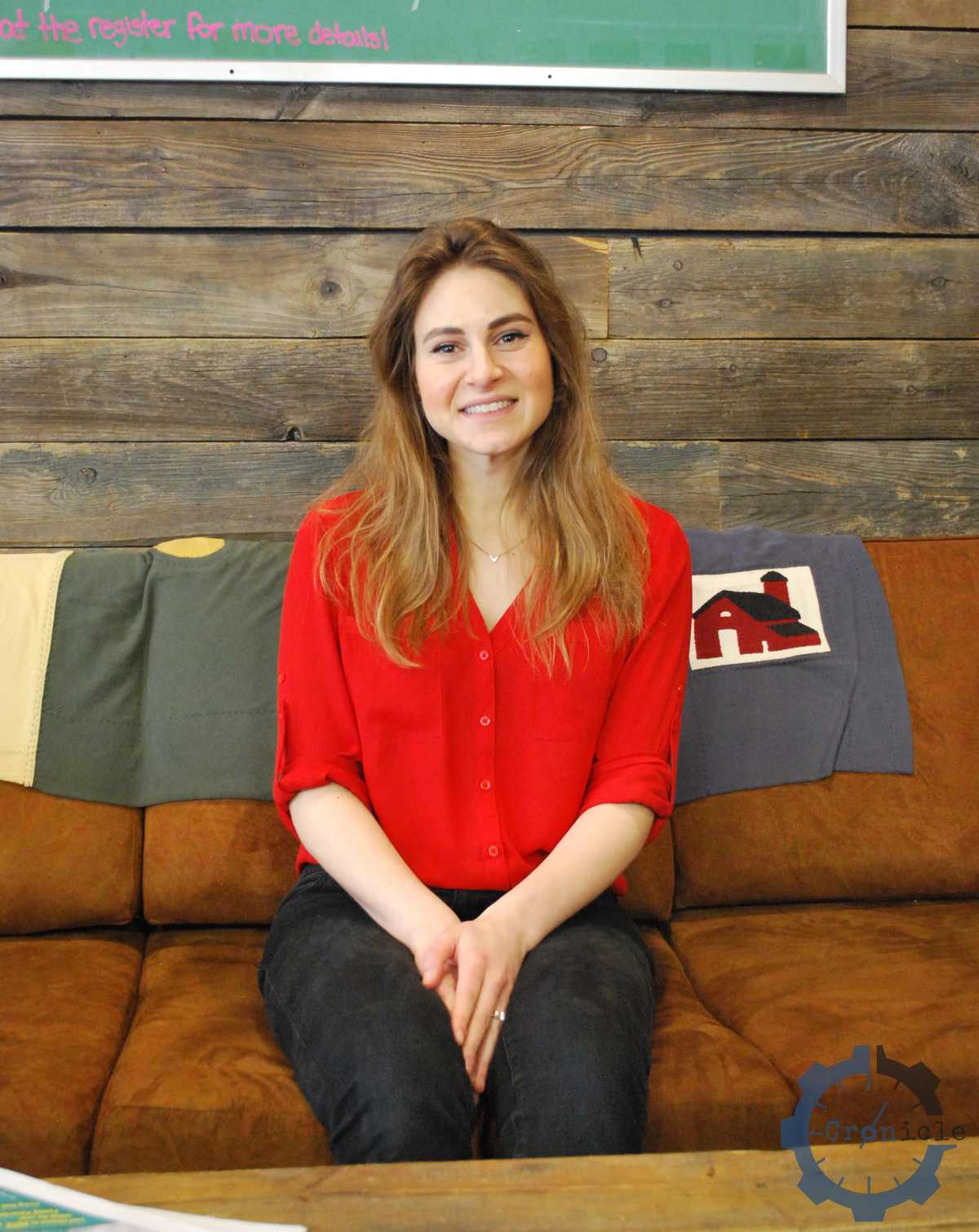Thomson Reuters' Nina Schell Talks User Experience Design in Real Life
By Laura Cowan
Laura K. Cowan is a tech, business, and wellness journalist and fantasy author whose work has focused on promoting sustainability initiatives and helping individuals find a sense of connection with the natural world.
Nina Schell, user experience designer at Thomson Reuters, visits with Cronicle at Argus Farm Stop on Packard for coffee.
"You can always make a better conduit of communication to people who can more directly solve that problem." Nina Schell, a UX Design Lead for Thomson Reuters' tax software arm in Ann Arbor, says that her role in developing software programs and user interfaces is all about communication, about building bridges between different departments. It's one of the ways UX designers can serve an organization, Schell says, by being uniquely positioned to see communication gaps in a company and help bridge the gap for a better product design process. What skill sets does a UX designer bring to this process in an age of user experience growing up and greatly expanding as an industry?
Schell brings a professional writing degree to the table, and says there is a trend on the west coast to hire UX writers, but you can get into user experience design from any starting point. "Some of my colleagues have backgrounds in opera, history, women's studies," she says. "Everyone has different backgrounds, but they all bring some common experience to the table, which includes an understanding of human psychology and how people interact with technology, how people take in information, and usually some experience in visual design. That's what unites it," Schell says.
"UX people are the glue to communication within an organization."
Nina Schell, UX Designer Thomson Reuters
"UX people are the glue," Schell says, "to communication within an organization. Storytelling is crucial because you might be the only person communicating between siloed parts of an organization."
These days, UX has grown so much as a career that the role is becoming specialized into different areas of focus: qualitative versus quantitative research, for example. Schell says one of the most interesting things about this is that data analytics are overlapping with language studies in UX to help companies study ways they can create a useable interface for people to read information in language they already know. For example, a UX designer might help a company use data analytics to look at words most commonly searched for in the context of a product or service they're developing, so the company can use words in their copy that people are most familiar with. Schell points to a humorous talk given at a recent Midwest UX conference as an example of how companies are becoming more aware of the importance of writing and language expertise, among many other disciplines, in the design of software and interfaces.
Schell gave a talk at a recent UX Ignite meetup about how she intentionally hacks her life to make the most of her time and energy--to make sure, for example, that her use of technology is intentional. You can tell in speaking with her that she has a real passion for what she does, and for maximizing the efficiency and enjoyment people get out of interacting with their environment. Even a physical environment someone walks into can be UX design, she says, not just software interfaces. What about a turnstile, or a space your company prepares to greet clients and customers? She loves learning as much as she can about how to make people feel comfortable interacting with technology using all kinds of integrated disciplines. "It's a super fun process. You never stop learning," she says.
She adds a note that physical space can have many elements to creating a user experience for a user. "If you walk into a building and it has a very high ceiling," Schell tells me, "that could contribute to you feeling a sense of awe or feeling small."
It's also a matter of rhythms and cycles of life. "There are so many different rhythms and seasons of life that you could be in," Schell says. "Sometimes you're feeling super creative and then you go through a period of rest, [for example].... Your whole life is figuring out your different rhythms."
"It's a super fun process. You never stop learning."
Nina Schell, UX Designer Thomson Reuters
Currently, Schell is reading The Death & Life of Great American Cities and tells me she would love to connect with more folks in urban planning. She likes to see where UX and those lines cross. Her husband is in urban planning, and Schell tells me, "It's inspirational to learn how their set of human-centered principles apply." You can contact Nina Schell here or find her at any UX event around Ann Arbor. She loves to talk with people about how cycles or seasons affect their experience of life or product design, and how people can be more aware of how various forces are impacting their lives.
nina schell, thomson reuters, user experience



